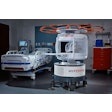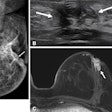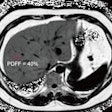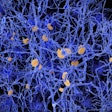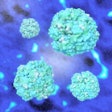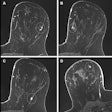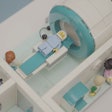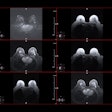A diffusion-weighted imaging (DWI) MRI technique that corrects for fat in the liver appears to perform comparably to MR enterography (MRE) for detecting liver scarring (i.e., fibrosis) in patients with metabolic dysfunction-associated steatotic liver disease (MASLD), researchers have reported.
"Fit-based non-Gaussian DWI with fat correction could potentially be used with similar diagnostic accuracy as MRE for detecting fibrosis in patients with MASLD," wrote a team led by doctoral candidate Omaïma Saïd of the Université Paris Cité in France. The findings were published October 24 in the Journal of Magnetic Resonance Imaging.
Fibrosis is an important predictor of long-term survival in MASLD patients, and DWI measures molecular diffusion of water in tissues and "changes in tissue microstructure can lead to variations in the apparent diffusion coefficient," the group explained. Measuring these variations can help stage liver fibrosis treatment, but compared with MRE -- and even though it is simpler to acquire -- conventional DWI has shown only middling accuracy for staging liver fibrosis.
Non-Gaussian DWI has been proposed for the diagnosis of liver fibrosis, but its effectiveness can be hindered by the presence of fat in the liver, the investigators wrote. (A non-Gaussian approach better identifies features such as cellularity and tissue heterogeneity, they noted.) The team conducted a study that explored whether a fat-corrected MRI protocol could improve the assessment of fibrosis in this patient population.
The research consisted of data from 222 individuals with type 2 diabetes, hepatic steatosis, and elevated aminotransferases from between October 2018 and June 2021. All study participants underwent liver biopsy and MRI. MR imaging was performed on a 3-tesla system and included DWI using spin-echo echo-planar imaging, MRE using gradient echo sequence, and fat fraction imaging using a multiple gradient echoes sequence. The group estimated diffusion coefficients using two non-Gaussian models: a shifted apparent diffusion coefficient (sADC) and a nonlinear least squares fit (ngADC) -- both of which were calculated with and without intravoxel fat correction using proton density fat fraction (PDFF).
Overall, the researchers reported that the DWI technique performed comparably to MRE when it came to discriminating fibrosis stage F0 versus F1 to F4 for ngADC (corrected for fat) and stiffness, with AUCs of 0.66 and 0.68, respectively (p < 0.05). (Fibrosis stages range from 0 to 4, with 0 indicating no fibrosis and 4 indicating cirrhosis).
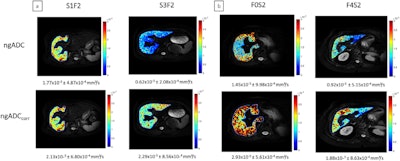 Representative parametric maps of ngADC (at the top) and ngADCcorr (at the bottom); (a) The effect of steatosis is depicted in two patients with identical F2 fibrosis stage but varying steatosis grade; (b) The effect of fibrosis is depicted in two patients with identical steatosis grade (S2) but varying fibrosis stage. In the uncorrected coefficient map, differences of ngADC are seen for steatosis (1.77 × 10-3 vs. 0.62 × 10-3 mm2/s), while in the corrected coefficient map, differences of ngADCcorr are seen for fibrosis (2.93 × 10-3 vs. 1.88 × 10-3 mm2/s). Images and caption courtesy of the JMRI.
Representative parametric maps of ngADC (at the top) and ngADCcorr (at the bottom); (a) The effect of steatosis is depicted in two patients with identical F2 fibrosis stage but varying steatosis grade; (b) The effect of fibrosis is depicted in two patients with identical steatosis grade (S2) but varying fibrosis stage. In the uncorrected coefficient map, differences of ngADC are seen for steatosis (1.77 × 10-3 vs. 0.62 × 10-3 mm2/s), while in the corrected coefficient map, differences of ngADCcorr are seen for fibrosis (2.93 × 10-3 vs. 1.88 × 10-3 mm2/s). Images and caption courtesy of the JMRI.
"[Our] findings suggest that fat-corrected MRI may help doctors detect liver fibrosis more reliably in patients with fatty liver disease," Saïd and colleagues concluded.
The complete study can be found here.



.fFmgij6Hin.png?auto=compress%2Cformat&fit=crop&h=100&q=70&w=100)
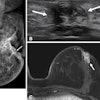
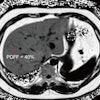

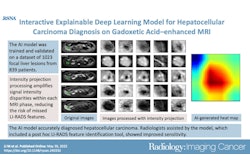
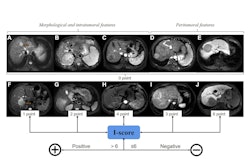
.fFmgij6Hin.png?auto=compress%2Cformat&fit=crop&h=167&q=70&w=250)

